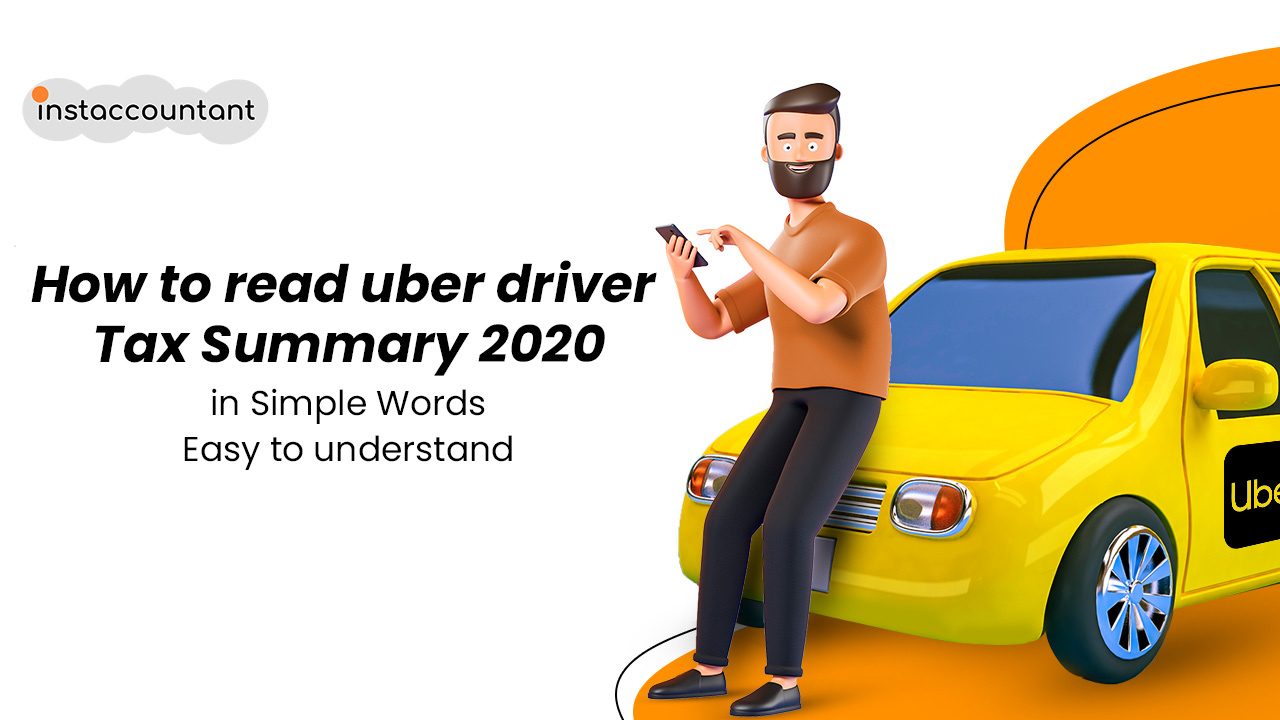Hello Uber drivers, like it or not, this is the tax time. I decided to write some blog posts to make a few things easier for you. This post is first of the information for the Uber drivers series.
The way information is presented on the Uber tax summary is a bit complicated. I don’t know why, but I am sure Uber has some reason for it. I am pretty sure every Uber driver has some kind of question or confusion around understanding the Uber tax summary (2020, 2019, or previous years).
Uber tax summary could be different for various countries, states/ provinces or jurisdictions. Most part of the information is quite similar, but there are important differences as well. Since we are based in GTA (Greater Toronto Area), we are going to explain a tax summary in easy words that GTA Uber drivers get (in general).
So let’s start. Before we go into detail, we should have a contextual background of the relationship between the driver and the Uber app (company or app/ platform). We will try to keep it limited to the financial transaction context. Let me simply put it; Uber assists drivers to make money by sharing their rides with random people.
The word ‘assists’ refers to all services the platform provides. In return, Uber gets a cut and (and/ or) fees. So, first Uber charges passengers on behalf of drivers. Then Uber takes its agreed share, fees, or charges, before paying it to the drivers. One more thing, any money collected from passengers is on behalf of the driver. I think that’s enough general background. Now let’s go to the detailed part.
You can find your tax summary under the tax documents in your Uber account.
Uber issues a report that carries different numbers and amounts in it. These are used for filing your annual tax returns (as self-employed or corporation).
In the image we have labelled each amount or figure that needs explanation. We will write the original explanation provided by Uber (available at: https://www.uber.com/ca/en/drive/tax-information/) and then elaborate that in simple words.
 a. Gross Uber Rides Fare
a. Gross Uber Rides Fare
The gross fare equals the time and distance travelled plus the service fee.
This amount represents the fare charged to the passenger by Uber on driver’s behalf. It is calculated on the basis of distance travelled and the time spent on trip. It also includes the service fees charged (as an agreed percentage). The distance charged to form this amount is discussed in point ‘m’ at the end.
b. Gross Uber Eats Fare
The gross fare equals the pickup fee, drop off fee, and distance travelled, plus the service fee.
For those drivers who also fulfil deliveries orders. This amount represents the fare charged to the customer by Uber on driver’s behalf. It is based on distance travelled, pickup fee and drop off fee. It also includes the service fees charged.
c. Split fare
This fee is charged to customers on your behalf when they split their fare using the Uber app.
Uber provides passengers the facility to split fare among themselves. The fee to do split fare is collected on behalf of the driver then taken back by Uber. This amount is quite common on tax summaries of Uber XL drivers; as a group of passengers use the same ride and split fare.
d. Tolls
Tolls are charged to riders on your behalf. The amounts are paid to you by riders as reimbursement of tolls you paid out of pocket.
Some time you have to use the ETR 407 towards dropping off your passenger. The passenger pays you the toll, which is collected by Uber. This amount is given to you by Uber as part of the total trip earnings. I would suggest to always compare the toll received and actual toll paid (on ETR bill), the difference can be claimed from Uber.
e. Airport fee
Airport fees are charged to riders on your behalf for trips from (and often to) the airport.
Talking about GTA, Uber has an arrangement with the Greater Toronto Airports Authority (GTAA) that allows Uber drivers to pick up (and drop off) passengers at Pearson airport (YYZ) (since June 12, 2018). On behalf of the drivers, Uber charges the passengers an airport fee, included in the fare, and which is then charged back from driver by Uber.
f. Booking fee
The booking fee is charged to riders on your behalf and is paid to you by the rider. An equal amount is then charged to you by Uber as a fee.
When a rider requests a ride (in the app), Uber will find a ride and book the order – once accepted by the driver. There is a fixed amount charged by Uber for every request a driver accepts. So, again this amount is charged from passenger for the driver (added to fare) and then taken back by Uber (subtracted from fare). Note, this fee is different from Uber (service) fee.
g. Tips
Tips are paid to you by riders.
This is the amount of tips given by passengers to the drivers. Collected by Uber, added to the fare and paid to driver.
h. Total
All (or some of) the amounts discussed above constitute a driver’s earnings. This total amount is just the sum of all accumulated amounts mentioned above. Please note, this is not your total earnings. I have seen a lot of drivers getting confused by this Total amount. I will discuss how to calculate your Uber earnings in another post.
i. HST on Uber rides
- On each trip, GST/HST is charged to riders on your behalf. If you drive with Uber in Ontario or Alberta, this GST/HST is deposited in your bank account each week.
- You’ll need to keep track of these amounts because you’re required to remit part of it to the CRA.
- Depending on how you’ve chosen to file, you’ll need to remit monthly, quarterly, or annually.
You as Uber drivers are charging HST to passengers for the service. Again, Uber collects it, adds it to the earnings and pays it to the driver. Therefore, it is mandatory for Uber drivers to register for HST as they must charge HST and remit to CRA. The explanation provided by Uber is quite self-explanatory. I will discuss Uber HST in detail in another post.
j. Referrals/ Incentives
Uber provides incentives to drivers to do certain things, like, completing an X number of trips in a certain time frame (Quest), encouraging other people to drive Uber as well. This amount is sum of all those incentives given to drivers by Uber. It is not a part of their fare related income.
k. Uber rides service fee
The service fee is the percentage-based fee for accessing the Uber platform.
This is the basic fee charged to drivers by Uber for using its facilities. It is based on a percentage. This fee is deducted from each fare as ‘Uber fee’. Note it is different from booking fee and its percentage may vary.
l. Uber Eats service fee
As the Uber rider service fee, this is the basic fees charged by Uber for using its platform.
m. On Trip Mileage
The number of Kilometres driven during your trips
This is the kilometers a driver drove the passengers after starting a trip up till completing (from pickup point to destination). So, this is the mileage you accumulated for driving passengers from point A to B and then charging for the same distance travelled. Note, this number does not reflect all your mileage for Uber or business.
As you can see the information provided on tax summary document is very important. It gets further confusing on how to calculate Uber earning for the year. I will write a post on that very soon. One more thing, we have discussed only Uber’s tax summary. Quarterly tax summary reports by Lyft are somewhat similar but also provide different information at the same time. Always a good idea to consult your accountant for tax related details. He (or she) might save you some money and trouble in return for few bucks.
If you need further information. Please call at; 647 243 2884
The Author is a Professional accountant who specializes in filing taxes for Uber drivers, self-employed, and incorporated professionals. He has filed thousands of Uber and Lyft tax drivers’ returns and helped them save on taxes. He is available virtually as well.
Please note: Due to Covid-19 situation; we prefer to provide tax return filing services virtually/remotely. Please call for details.
Disclaimer: This is a general explanation and should be used only for informative and understanding purpose. This article cannot be used or referenced for legal or tax purposes. Every tax situation is different. You should consult a lawyer or accountant to understand application in a particular tax situation.





One Response